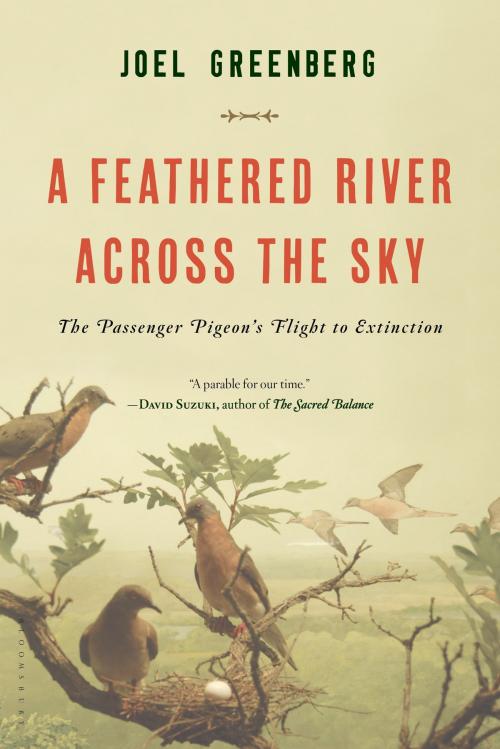A Feathered River Across the Sky
The Passenger Pigeon's Flight to Extinction
Nonfiction, Science & Nature, Science, Earth Sciences, Nature, Animals| Author: | Joel Greenberg | ISBN: | 9781620405352 |
| Publisher: | Bloomsbury Publishing | Publication: | January 30, 2014 |
| Imprint: | Bloomsbury USA | Language: | English |
| Author: | Joel Greenberg |
| ISBN: | 9781620405352 |
| Publisher: | Bloomsbury Publishing |
| Publication: | January 30, 2014 |
| Imprint: | Bloomsbury USA |
| Language: | English |
The epic story of why passenger pigeons became extinct and what that says about our current relationship with the natural world.
When Europeans arrived in North America, 25 to 40 percent of the continent's birds were passenger pigeons, traveling in flocks so massive as to block out the sun for hours or even days. The downbeats of their wings would chill the air beneath and create a thundering roar that would drown out all other sound. John James Audubon, impressed by their speed and agility, said a lone passenger pigeon streaking through the forest “passes like a thought.” How prophetic-for although a billion pigeons crossed the skies 80 miles from Toronto in May of 1860, little more than fifty years later passenger pigeons were extinct. The last of the species, Martha, died in captivity at the Cincinnati Zoo on September 1, 1914.
As naturalist Joel Greenberg relates in gripping detail, the pigeons' propensity to nest, roost, and fly together in vast numbers made them vulnerable to unremitting market and recreational hunting. The spread of railroads and telegraph lines created national demand that allowed the birds to be pursued relentlessly. Passenger pigeons inspired awe in the likes of Audubon, Henry David Thoreau, James Fenimore Cooper, and others, but no serious effort was made to protect the species until it was too late. Greenberg's beautifully written story of the passenger pigeon paints a vivid picture of the passenger pigeon's place in literature, art, and the hearts and minds of those who witnessed this epic bird, while providing a cautionary tale of what happens when species and natural resources are not harvested sustainably.
The epic story of why passenger pigeons became extinct and what that says about our current relationship with the natural world.
When Europeans arrived in North America, 25 to 40 percent of the continent's birds were passenger pigeons, traveling in flocks so massive as to block out the sun for hours or even days. The downbeats of their wings would chill the air beneath and create a thundering roar that would drown out all other sound. John James Audubon, impressed by their speed and agility, said a lone passenger pigeon streaking through the forest “passes like a thought.” How prophetic-for although a billion pigeons crossed the skies 80 miles from Toronto in May of 1860, little more than fifty years later passenger pigeons were extinct. The last of the species, Martha, died in captivity at the Cincinnati Zoo on September 1, 1914.
As naturalist Joel Greenberg relates in gripping detail, the pigeons' propensity to nest, roost, and fly together in vast numbers made them vulnerable to unremitting market and recreational hunting. The spread of railroads and telegraph lines created national demand that allowed the birds to be pursued relentlessly. Passenger pigeons inspired awe in the likes of Audubon, Henry David Thoreau, James Fenimore Cooper, and others, but no serious effort was made to protect the species until it was too late. Greenberg's beautifully written story of the passenger pigeon paints a vivid picture of the passenger pigeon's place in literature, art, and the hearts and minds of those who witnessed this epic bird, while providing a cautionary tale of what happens when species and natural resources are not harvested sustainably.















